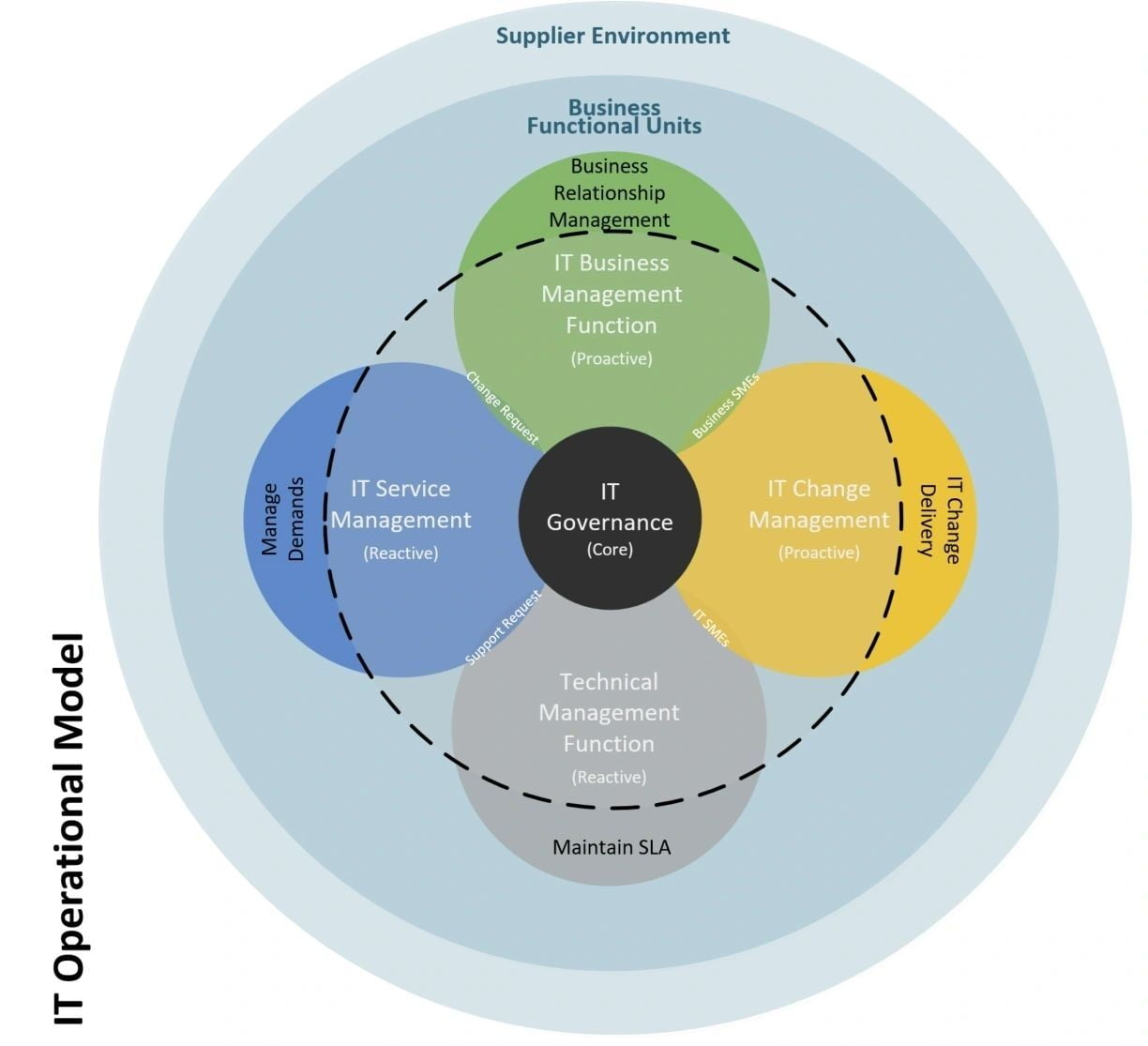IT is the Business - No Back-Office anymore…

It is not just I.T. it's "Information and Technology" (I&T)How IT should respond in today's VUCA world? An IT department shouldn't only maintain the service level agreement, IT must deliver end-to-end across the business value chain as more and more businesses depend on IT without realising how deep and broad IT role and impact can be on their business future of Survive, Thrive, Transform models. The IT Enterprise Operational Model should be transformed from a reactive service operational model to a proactive business value delivery model. It requires an End-to-End IT operating model in a complex business situation with business value delivery focus in a shorter lifecycle as businesses evolve and IT underpins every aspect of almost any business model.
The main drivers of such an operational mode transformation are
- Higher Business dependency on IT in complex situations
- Speed of delivery from IT to respond to rapid business changes.
- Emerging and Disruptive technology demand
- Businesses are transforming to Digital model more and more
The IT operational model should be designed from "Start at the End" by Dave Lavinsky approach, focus on Business Outcomes to deliver end to end Business Solution, not IT Solutions.
Enterprise IT Operational Model
- Approach: Business Delivery Oriented model
- Purpose: Focus on Business outcomes to increase the speed of delivery and respond to business requests while maintaining the current SLA more efficient and effective
IT Governance (Core):
Aim: Manage and Develop IT Department
Team: IT Managers
Elements:
- IT Strategy (Direction & Focus Area, Past. Now. Future)
- IT Governance in Macro & Micro levels (Principles, Rules, Roles & Responsibilities)
- IT Operational Management (Business Reporting, IT Finance, IT Legal...)
- IT Operational Development (IT Process Development, IT Capability Development)
IT Service Management (Reactive):
Aim: Manage Demands and Events (ITIL)
Team: Service Desk Team
Elements:
- Service Strategy
- Service Design
- Service Transition
- Service Operation
- Continual Service Improvement (CSI)
- Supplier Management
IT Change Management (Proactive):
Aim: IT Change Delivery
Team: Project Managers, Business Analysts, Solution Architectures
Elements:
- PM Office (Predictable Change)
- Innovation Lab (Experimental Change)
- Adoption Office (Transitional Change) (Awareness/Getting Started/Achieve More, Training/Mentoring/Coaching, Process Change/Transition/Migration, Evaluation)
- Digital Transformation Office (Transformational Change)
IT Business Management Function (Proactive):
Aim: Business Relationship Management & IT Collaboration
Team: Business Partners
Elements:
- Business Domain Knowledge Expert
- Business Analysis (Needs, Plan, Evaluation)
Technical Management Function (Reactive):
Aim: Maintain SLA and Technical Knowledge Delivery
Team: IT Specialists
Elements:
- Business Systems - Vertical, Horizontal, Cloud
- Software - Desktop, Enterprise, Apps, Programming
- Network
- Hardware
- Security
- Integration
